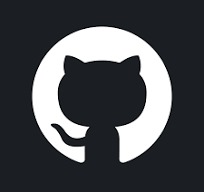Want to turn your ideas into stunning websites? Becoming a web developer in 2024 is booming! Craft user-friendly websites and apps that businesses need. From e-commerce stores to social media platforms, the possibilities are endless.
Ready to uncover your inner web development wizard? This guide will break down a journey to become a web developer into 5 simple steps, making it achievable for anyone, even beginners. So grab a coffee, get comfy, and let’s code your dreams into reality!
Step # 1: Choosing Web Dev Paths: Front-End, Back-End, or Full-Stack?
Web development in 2024 is a vast and exciting field, but it’s not a one-size-fits-all career. There are three main specializations, each with its own unique focus.
Choosing the right path can make a big difference in your enjoyment and success, so let’s explore them in more detail:
1. Front-End Development: The Architects of the Web
Imagine a stunning website that engages users with its design and functionality. That’s the magic of front-end development! These developers are the creative minds behind the user interface (UI) and user experience (UX) of a website. They focus on the visual aspects, making sure everything looks beautiful, functions smoothly, and provides an intuitive experience for visitors.
Here’s a breakdown of what front-end developers typically do:
- Building website layouts: They use HTML to structure the website’s content, like building the foundation of a house.
- Adding style and flair: With CSS, they act like interior designers, applying styles and colors to make the website visually appealing and engaging.
- Bringing it to life: JavaScript is their secret weapon, adding interactivity and dynamic elements to the website, like animations or pop-up menus.
2. Back-End Development: The Masters Behind the Scenes
Every website you visit relies on a complex system working tirelessly in the background. That’s the domain of back-end developers! They are the architects of the server-side, the unseen engine that powers everything you experience on a website.
Here’s a glimpse into the world of back-end development:
- Building the server infrastructure: They create and maintain the server-side systems that store data, process information, and keep the website running smoothly.
- Ensuring data security: They implement security measures to protect sensitive user information and prevent cyberattacks.
- Making magic happen: Back-end developers use languages like Python, Java, or Ruby to write code that connects the website to databases and external services.
3. Full-Stack Development: The Superheroes of Web Dev
Full-stack developers are the ultimate all-rounders. They possess the skills of both front-end and back-end development, making them highly efficient in the web development world. They can seamlessly switch between designing user interfaces and building complex server-side functionalities.
This versatility allows full-stack developers to work independently on entire web projects, from initial concept to final execution.
Still unsure which path to choose? No worries! There are plenty of free online quizzes to help you discover your developer personality.
Step # 2: Learn the Trade’s Secrets To Unlock Your Web Development Career in 2024
Conquering the web development world starts with the right tools in your grip. Don’t worry, these aren’t magical spells – they’re powerful languages and tools you can master with dedication!
Here’s the exciting thing: regardless of your chosen path (front-end, back-end, or full-stack), there’s a foundational trio that forms the bedrock of web development:
HTML (Hyper-Text Markup Language):

Imagine HTML as the skeleton of a website. It defines the structure and layout of the content, like the framework of a building. Using simple tags and attributes, you tell the browser how to display different elements like headings, paragraphs, images, and links.
Think of it as laying the groundwork for your masterpiece.
CSS (Cascading Style Sheets):

This section is where the website design goes from basic plans to something stunning! CSS controls the visual appearance, letting you add colors, fonts, layouts, and animations.
It’s like the paintbrush and decorating tools that bring your HTML structure to life. You can define styles for individual elements or create reusable stylesheets for a consistent look across your website.
JavaScript:

While HTML and CSS provide the foundation and aesthetics, JavaScript injects the magic of interactivity. It’s like the electrical wiring of your website, allowing for user input forms, dynamic content updates, and cool animations.
Imagine creating a website that reacts to user clicks, validates forms, or displays interactive elements – that’s the power of JavaScript!
Additional languages
Now, depending on your specialization, you might delve deeper into some additional languages:
- Front-End Developers: Frameworks like React, Angular, or Vue.js can supercharge your front-end development. These pre-built libraries offer reusable components and functionalities, making complex tasks like building user interfaces or managing data flow more efficient.
Think of them as pre-made building blocks that save you time and effort while building stunning websites. - Back-End Developers: Languages like Python, Java, or Ruby are the workhorses of back-end development. They allow you to build powerful server-side functionalities. Python is known for its readability and ease of use, while Java is a versatile and popular choice for company applications. Ruby, on the other hand, is known for its developer-friendly syntax and the powerful Ruby on Rails framework.
Essential tools
Don’t forget the essential tools that web developers use every day:
- Version control systems like Git: Imagine multiple people working on the same house at the same time. Version control keeps track of all changes made to the website’s code, ensuring smooth collaboration and preventing accidental overwrites.
Think of it as a magic “undo” button for your code! Git allows you to track changes, revert to previous versions, and collaborate seamlessly with other developers. - GitHub: This online platform is like a social network for code. It allows developers to store their projects publicly or privately, share code with others, and collaborate on open-source projects.
You can use GitHub to showcase your portfolio, contribute to existing projects, and learn from other developers in the active web development community.
The good news? There are tons of free online courses, tutorials, and resources available to help you learn these languages and tools.

Step # 3: Hands-on Tips To Become a Web Developer In 2024
Now that you’re armed with the foundational knowledge, it’s time to put your skills into action! Building a portfolio of projects is a fantastic way to showcase your abilities to potential employers and demonstrate your dedication to learning. Here’s how to get started:
Finding Project Ideas:
Don’t get confused by the thought of crafting a complex website. Start small! Here are some beginner-friendly project ideas:
Personal Website:
Build a simple website showcasing your skills and interests. This is a great way to experiment with HTML, CSS, and JavaScript.
Clone a Simple Website:
Find a website with a clean design and layout you admire. Try replicating it to practice your coding skills and understand website structure.
Interactive Elements:
Create a simple game or animation using JavaScript. This will help you grasp the power of interactivity and user engagement.
Free Resources for Project Inspiration:
There are countless websites that offer free project ideas and templates to get you going. Here are a few popular options:
Frontend Mentor:
Offers a variety of front-end development challenges with real-world website mockups for you to practice building.
FreeCodeCamp:
Provides a wide range of coding challenges and projects for all skill levels.
CodePen:
A popular platform for front-end developers to create and share code snippets and projects.
Freelancing:
As you gain experience and confidence, consider taking on freelance projects. This is a fantastic way to build your portfolio, gain real-world experience, and potentially earn some income while doing what you love.
Websites like Upwork or Fiverr can connect you with potential clients.
Remember, the key is to start small, be consistent in your practice, and don’t be afraid to experiment. There are online communities and forums where you can connect with other developers, ask questions, and share your progress.
The web development world is a supportive and collaborative environment, so don’t hesitate to reach out and learn from others!
Must read https://inverostechnologies.com/technologies/top-next-js-15-rc-features-you-need-to-know-now/
Step # 4: Non-Stop Learning Sharpen Your Skills
The world of web development in 2024 is ever-evolving. New technologies and frameworks emerge constantly, so staying updated is crucial for maintaining a competitive career. Here’s how to cultivate a growth mindset and ensure your skills remain sharp:
Online Courses and Tutorials:
There’s an ocean of free and paid online courses available to cater to all skill levels. Platforms like Coursera, edX, and Udemy offer comprehensive courses on various web development topics.
YouTube tutorials are another fantastic resource for learning specific skills or diving deeper into specific technologies.
Books and Articles:
Don’t underestimate the power of good old fashioned reading! Books provide in-depth explanations and a structured learning path, while tech blogs and articles keep you informed about the latest trends and advancements in the field.
Consider subscribing to popular web development blogs or following industry influencers on social media.
Web Development Communities:
Learning doesn’t happen in isolation. Join online forums, communities like Stack Overflow, or local meetups to connect with other developers.
Ask questions, share your experiences, and participate in discussions. You’ll not only learn from others but also build valuable connections within the web development community.
Participate in Hackathons:
Hackathons are intense coding events where developers collaborate to build projects within a limited timeframe. They’re a fantastic way to push your limits, learn new technologies, and network with other developers.
Here’s a bonus: winning hackathons can boost your portfolio and impress potential employers!
Embrace Open-source Projects:
Contributing to open-source projects is another excellent way to enhance your skills and gain valuable real-world experience. You’ll collaborate with experienced developers, learn from their code, and potentially get your name out there within the industry.
Remember, learning is a lifelong journey in web development. Embrace the challenges, stay curious, and continuously seek new ways to improve your craft.
The more you learn and practice, the more you’ll be prepared to navigate the ever-changing landscape of web development.
Step # 5: Landing Your Dream Job: Resumé, Portfolio, and Interview Tips
Congratulations! You’ve mastered the fundamentals, built a solid portfolio, and honed your skills through continuous learning. Now it’s time to translate your passion into a rewarding career.
Here’s how to make a strong impression on potential employers:
Crafting a Stellar Resume:
Create your resume to highlight the skills and technologies relevant to the specific job you’re applying for. Use keywords from the job description and showcase your projects, emphasizing the problems you solved and the value you brought.
Quantify your achievements whenever possible (e.g., “Increased website traffic by 20% through SEO optimization”).
Showcasing Your Portfolio:
Your portfolio is your chance to shine! Make it visually appealing, easy to navigate, and highlight your best projects.
Use clear descriptions to explain the project’s purpose, the technologies used, and your role in its development. Consider including live demos of your projects whenever possible.
Interview Tips for Success:
- Research about the company and the specific role before interview. This demonstrates your genuine interest and allows you to tailor your responses to their needs.
- Prepare for common web development interview questions like “Explain the difference between HTTP and HTTPS” or “Describe your experience with version control systems.”
- Practice your answers before interview to feel confident and articulate your skills clearly. Most importantly, be enthusiastic, showcase your passion for web development, and let your personality shine through!
Further reading: https://inverostechnologies.com/openai/7-mind-blowing-features-you-need-to-know-about-gpt-4o/
Conclusion:
Network with other developers – attend industry events, connect on LinkedIn, and build relationships. This can be a fantastic way to learn about job openings, get referrals, and gain valuable insights from experienced professionals.
The web development world is over loaded with exciting opportunities. By following these steps, you’ll be well on your way to landing your dream job and embarking on a fulfilling career in this dynamic and ever-evolving field.
Remember, the journey of learning never ends, so stay curious, embrace challenges, and keep coding your dreams into reality!
FAQs: Launching Your Web Development Journey in 2024
Congratulations on taking the exciting first step towards becoming a web developer! This FAQ section tackles some common questions you might have as you embark on this rewarding career path:
Q: Do I need a computer science degree to become a web developer?
A: Not necessarily! The beauty of web development is that it’s a field open to passionate learners with a knack for technology. While a computer science degree can provide a strong foundation, many developers come from diverse backgrounds and learn the necessary skills through online courses, boot camps, or self-study.
Q: I have no coding experience. Can I still become a web developer?
A: Absolutely! There are plenty of beginner-friendly resources available to get you started. This guide provides a roadmap to break down the learning process into manageable steps. Focus on mastering the core concepts, don’t be afraid to experiment, and leverage the vast online resources available.
Q: Which web development path should I choose (front-end, back-end, or full-stack)?
A: The best path depends on your interests! This guide explores the different specializations to help you identify what excites you most. Don’t worry if you’re unsure initially – many online quizzes can help you discover your developer personality.
Q: What are some free resources to learn web development?
A: There’s an ocean of free online courses, tutorials, and articles available! Platforms like Coursera, edX, YouTube, and FreeCodeCamp offer fantastic learning opportunities.
This guide highlights some popular resources to get you started.
Q: How long does it take to become a web developer in 2024?
A: The timeframe varies depending on your learning pace and dedication. With consistent practice, you can build a solid foundation within a few months. However, web development is a continuous learning journey.
The more you learn and practice, the more valuable you become in the job market.
Q: How do I land my first web developer job?
A: This guide provides tips on crafting a strong resume that showcases your skills and projects. Building a portfolio website is crucial to demonstrate your work. Research companies and practice common interview questions to build confidence. Networking with other developers can also open doors to exciting opportunities.
Q: Is web development a good career choice in 2024?
A: The demand for skilled web developers is skyrocketing! With the ever-growing online presence of businesses, web development offers promising career opportunities. It’s a dynamic field that allows you to be creative, solve problems, and build something tangible that people use every day.
Q: What are some essential tools for web developers?
A: Besides the core languages and frameworks, some essential tools include:
Version control systems like Git:
Keeps track of changes made to your code, allowing for smooth collaboration and easy rollbacks if needed.
Code editors or IDEs:
Integrated Development Environments (IDEs) offer features like code completion, debugging tools, and project management functionalities. Popular options include Visual Studio Code, Sublime Text, or Atom.
Web browsers with developer tools:
Your browser’s developer tools allow you to inspect website code, debug errors, and test your website’s responsiveness across different devices.
Q: Is web development a good career for someone who loves creativity in 2024?
A: Absolutely! Web development allows you to express your creativity in many ways. From designing user interfaces and crafting interactive elements to building visually appealing and user-friendly websites, there’s plenty of room to inject your creative vision.
Q: I’m worried about keeping up with the ever-changing nature of web development. What can I do?
A: The constant evolution of web development is what keeps things exciting! Here are some tips to stay ahead of the curve:
- Follow tech blogs and publications: Stay updated on the latest trends and advancements by subscribing to reputable web development blogs or following industry influencers on social media.
- Participate in online communities: Forums like Stack Overflow or online communities allow you to connect with other developers, discuss new technologies, and learn from each other’s experiences.
- Embrace continuous learning: Make learning a habit! There are always new things to discover in web development. Dedicate time to explore new frameworks, attend workshops or conferences, and never stop expanding your skillset.
Remember, the web development community is a welcoming and supportive environment. Don’t hesitate to ask questions, share your progress, and learn from the vast network of experienced developers out there. With dedication, passion, and a continuous learning mindset, you can thrive in this exciting and rewarding field!
Don’t hesitate to put your questions in the comment section. We are here to help you.




Pingback: How Long Does Cyber Security Training REALLY Take? Revealing the Truth! - inveros technologies
I’m an It student
Understanding customer insights was made simple by your blog.
Hey people!!!!!
Good mood and good luck to everyone!!!!!
Your article on market research was very helpful.
koLAYiPU
Utilize platforms dedicated to web 2.0 submissions for expanding your online presence.
Utilize these resources to enhance your website’s SEO performance effectively.